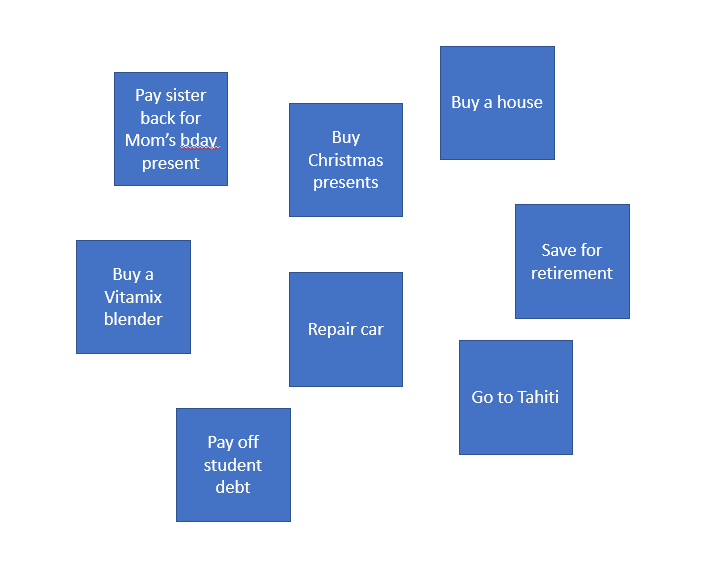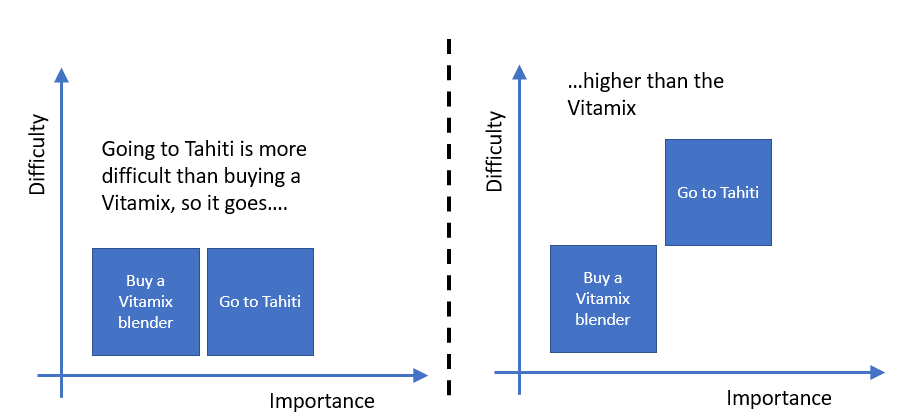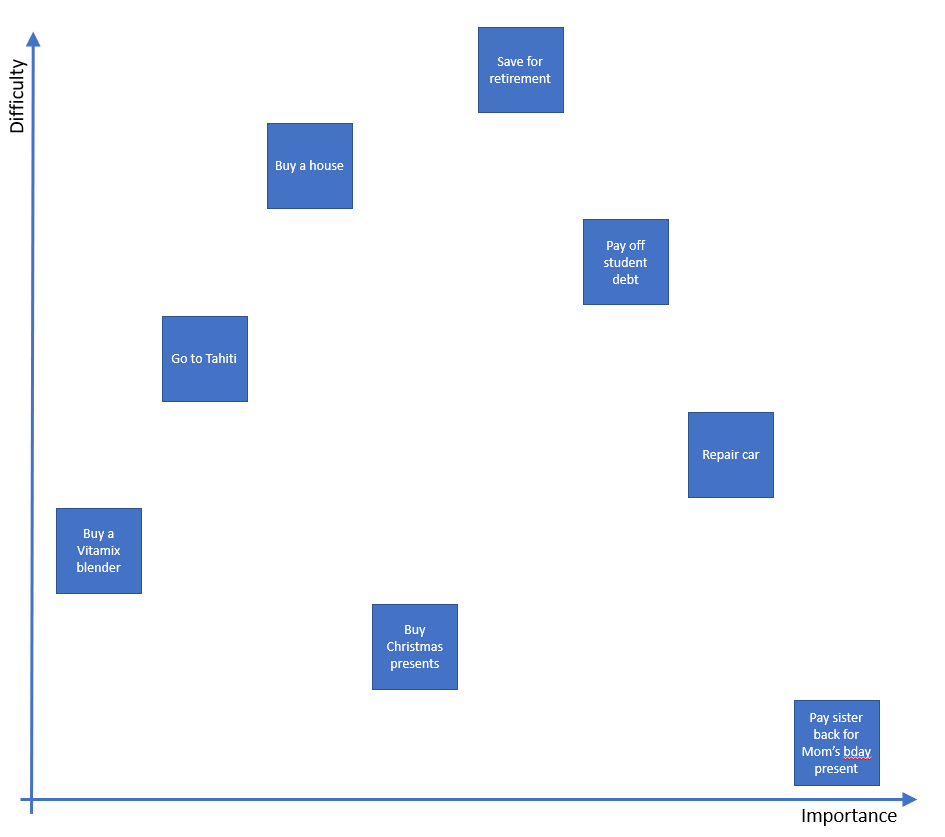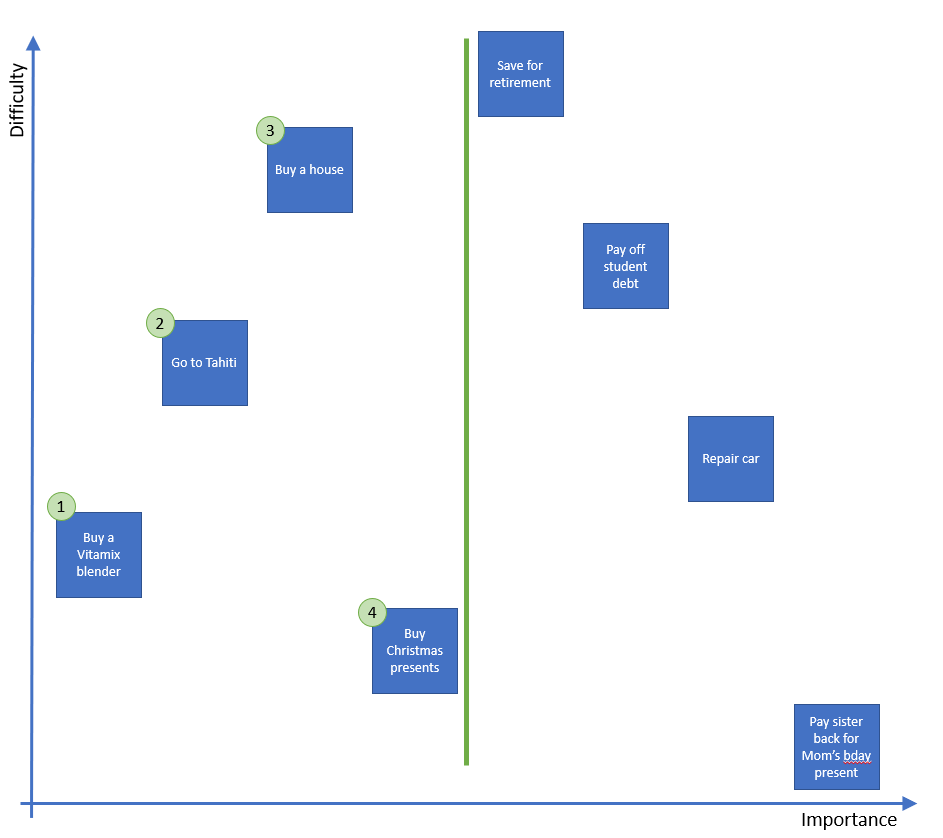Hi, my name is Kath, and I’m HORRIFIC at prioritization. I spend a lot of time trying to decide what to do because I don’t even know how to begin organizing the reasons why I should do any given thing. I have, however, discovered a tool that can help make the decisions easier, and it is the Importance/Difficulty Matrix.
An Aside about the Eisenhower Matrix
For the record, this section doesn’t add much value to the rest of this post. If you couldn’t care less about the Eisenhower Matrix, you can skip this section, because I have OPINIONS and I’m going to express them here.
If you’re not familiar with the Eisenhower Matrix, it’s a system that the 34th President of the United States, Dwight D. Eisenhower, famously developed to help him decide what to focus on daily. And he had a lot to focus on – he was the Allied Forces Supreme Commander during World War II.
The Eisenhower Matrix has you rank tasks based on how urgent they are and how important they are. My problem with that is that I never really understood the difference between important and urgent. Every single thing on my list is important – THAT’S WHY IT’S ON THE DAMN LIST. I work on things in terms of what needed to be done next – in theory, that’s what urgency means. And so when I use the Eisenhower Matrix, it ends up in this weird binary where things either need to be done urgently or they don’t – it’s all important anyway. So great, now I have two lists – one that’s more urgent than the other. I end up not delegating or deleting any items, and the tool is useless to me.
Ok, rant over. Sorry about that.
Importance/Difficulty Matrix
This is a tool used by the Luma Institute when they train people for Human-Centered Design. I completed Luma training in my last job, and it’s proven to be useful in my life outside the corporate world. (And BOY if you want to talk about systems, Human-Centered Design [or Design Thinking, or whatever you want to call it] is an incredible way to identify people’s needs in an authentic way.)
List your items
To put the Importance/Difficulty Matrix to work, you first need a list of items to prioritize. This works best for 7-10 items and can be used for a variety of scenarios – goal setting, vacation planning (I just realized I should have used this to help me plan Paris…), car feature shopping, the list goes on.
List out your items on sticky notes. I’ll do an example for prioritizing financial goals:

Putting my Powerpoint skills to good use!
Organize by importance
Then, you arrange them in a straight line, with the most important goals on the right and the least important on the left. Don’t worry about how much more important these things are – you’re just comparing them to each other.
In this example, you’ll see that paying my sister back for Mom’s birthday present is the most important, because I value that relationship. Buying a house is slightly less important than buying Christmas presents because I care about family traditions, but I wouldn’t sacrifice saving for retirement in order to buy the presents. Do you see how this works?
Organize by difficulty
Next, you’ll do the same thing, but order them by difficulty. Leave them in the importance order.
I’ll show you:
If something belongs at the bottom, shift all others up. If it belongs in between two items, shift them around to make space.
Once you have everything organized by difficulty, it should look like this:
Divide into quadrants
This is my favorite part – divide the chart into four, but do it mathematically. Figure out what half your total items are (in this example, I have 8 total, so half is 4), and then put a vertical line so half are on the right and half are on the left:
Then, put a horizontal line so half are on top, and half are on the bottom.
Evaluate where the items fell in the Importance/Difficulty Matrix
This is where we see the big difference between the Importance/Difficulty Matrix and the Eisenhower Matrix. With this tool, you don’t decide where the items belong – you simply compare them to each other in terms of importance and difficulty. Then, divide it up quantitatively. No judgement calls necessary!
Let’s talk about what each of the quadrants means. Are you ready for some business speak?
High ROI
Down in the bottom-right-hand quarter, we have the High Return on Investment items. These are the ones that are really important to you, but aren’t going to take much effort. Put these at the top of your to do list and dedicate resources (time, money, effort) to them first.
In the example, this means paying my sister off ASAP and getting my car in the shop before I start worrying about saving for anything else.
Strategic Investments
Up in the top right, we have Strategic Investments. These ones are difficult enough that you can’t finish them right now, but important enough that you should be putting resources toward them now so that you can finish them eventually.
For the example, I would put together a plan to slowly pay off student debt and build up retirement savings. The important thing is to find small, consistent steps toward these big goals.
Low-Hanging Fruit
Down in the bottom-left live the Low-Hanging Fruit. These are items that are great if you have time, but you shouldn’t put resources here if you don’t have them to spare. On the other hand, if you resources to spare, this is a great place to look to find quick wins.
In my example, buying Christmas presents isn’t important enough to warrant immediate attention, but if I have a few dollars left over after taking care of the first two categories, I should see if I can knock a present or two off my list.
Luxuries
Finally, up in the top left, we have our Luxuries. These items are difficult, but not important, so only work on them when everything else is taken care of.
In the example, this means I’m not going to Tahiti anytime soon. But maybe, once I pay off a chunk of student loans, it might become important enough to focus on.
Do Not Despair
One note I want to leave you with. I’m disappointed that “Buy a House” didn’t land in a “pay attention now” category. To that I say: not YET. This tool helps organize your priorities right now. In a few months or years, you’ll reevaluate and those Luxury items might fall higher on the list – and other ones might fall lower!
I hope this is helpful. The Importance/Difficulty Matrix is one of my most-used prioritization tools, and I would love it if somebody else finds it useful, too.








